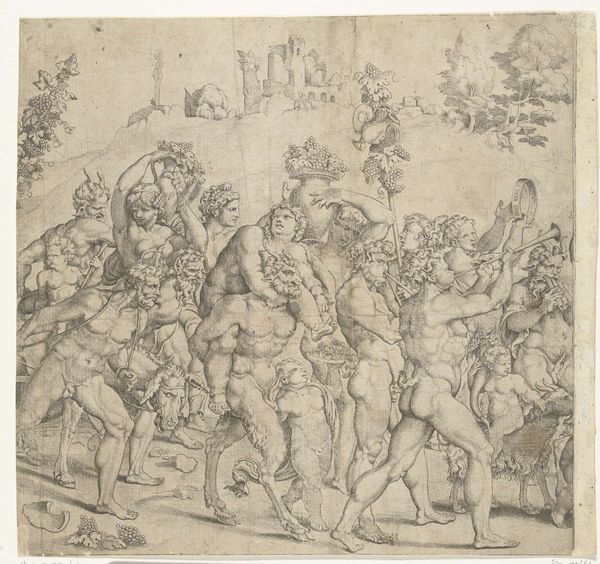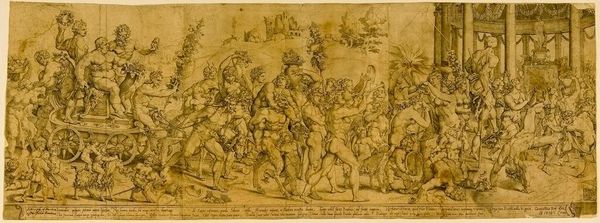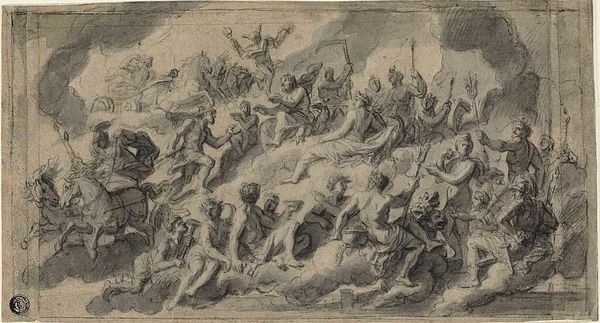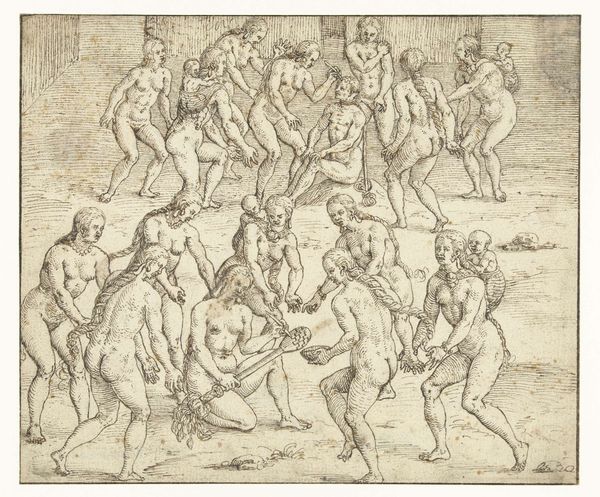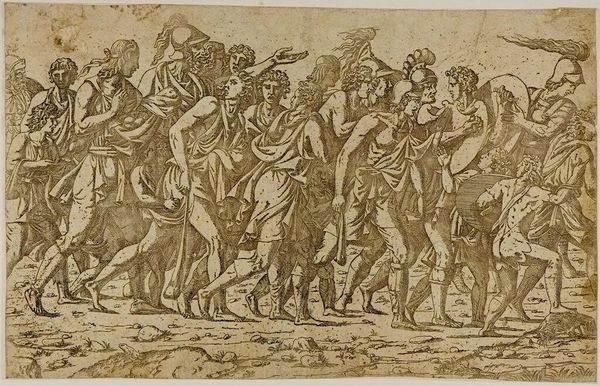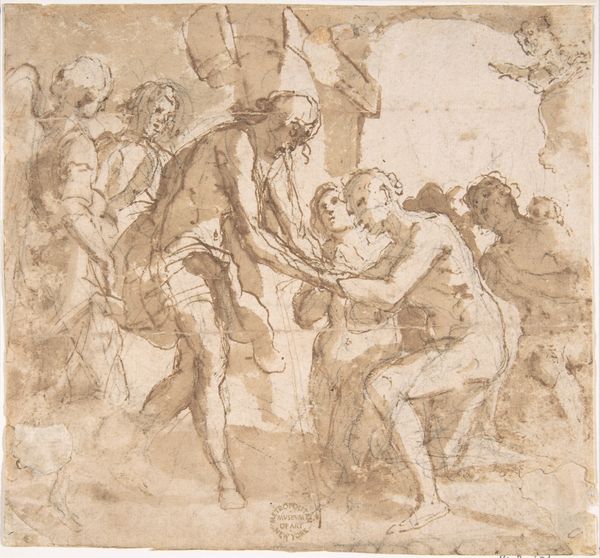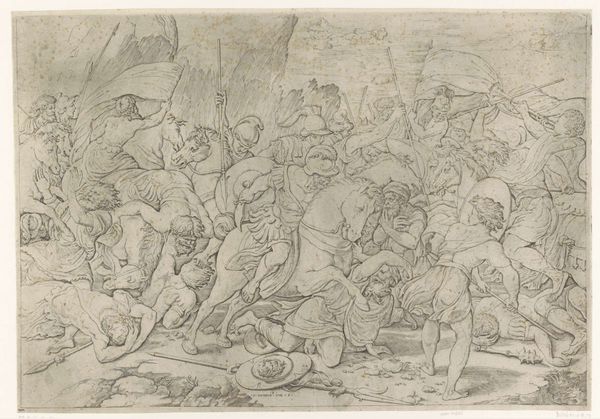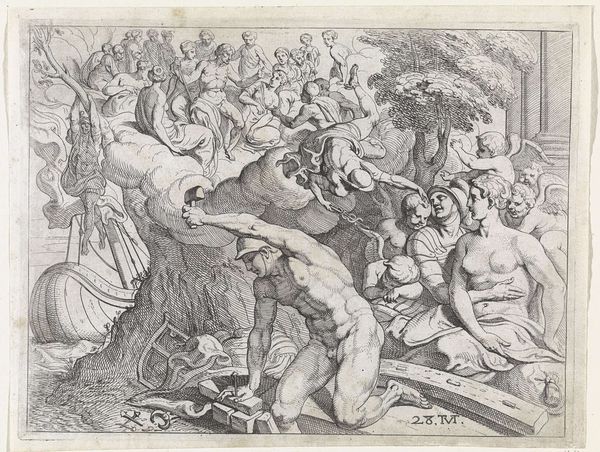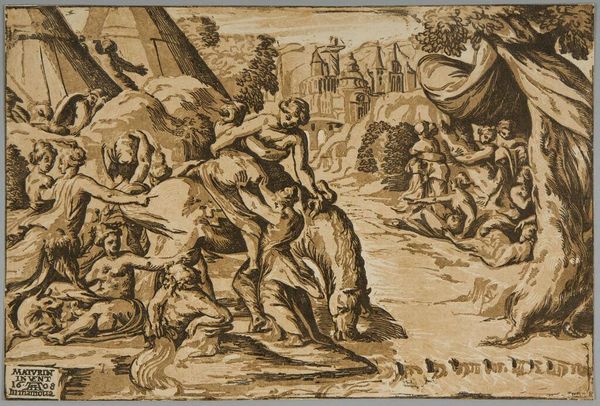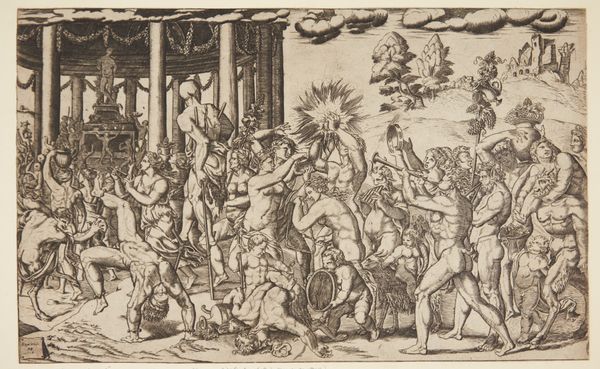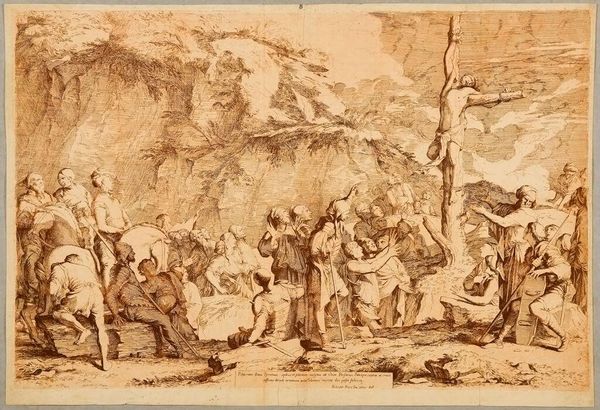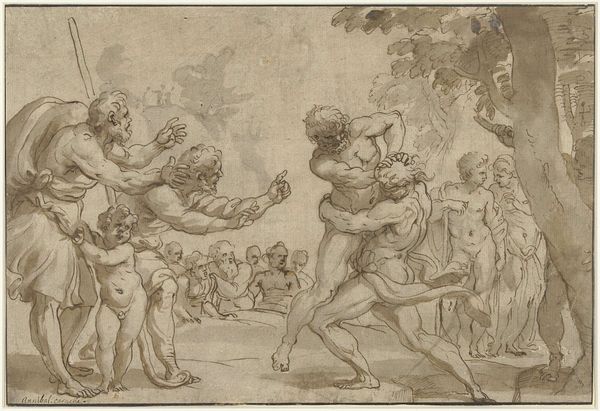
drawing, ink, pen
#
drawing
#
ink drawing
#
allegory
#
pen drawing
#
pen sketch
#
mannerism
#
figuration
#
ink
#
line
#
pen
#
history-painting
Dimensions: height 315 mm, width 865 mm
Copyright: Rijks Museum: Open Domain
Curator: This ink drawing, dating back to 1543, is entitled “Triumph of Bacchus” by Cornelis Bos and resides in the Rijksmuseum. What’s your initial impression? Editor: Chaotic, but captivating. There’s a swirling energy and a real sense of abandon. A dense composition where figures tumble and reach. What’s compelling about the marks and use of line in creating such visual complexity. Curator: Absolutely. Looking closely, you can observe how the artist carefully manipulated ink and pen to create varied textures. These deliberate markings add layers to the narrative of celebration. The sheer labor involved in creating this sort of image should be noted. Editor: Precisely! Bacchus, of course, represents not just intoxication, but ritual madness, liberation. See how Bos renders him? Crowned with vines, enthroned on a cart – he’s an icon of transformation, leading the revelry. It mirrors the Dionysian mysteries. Curator: That procession would have necessitated careful staging. Who carved the models that may have been used? Where did Bos source his paper and ink? These are relevant considerations. Editor: Yes, and the work becomes all the more poignant considering the revival of classical imagery at this time. Every bacchanal gesture, every wreath and thyrsus…they are fragments of memory, meant to conjure ancient worlds while participating in sixteenth century intellectual culture. Curator: It prompts questions regarding artistic license. While rooted in history, the scene seems an imaginative rendering. One wonders to what degree Cornelis Bos has altered and manipulated aspects of the traditional revelry. Editor: And consider the endurance of these symbols. Long after Rome, we find echoes in Renaissance art, and even now, images of Bacchus surface in our own culture, representing those eternal desires for pleasure, release, and ecstasy. It reminds us that cultural narratives build over time. Curator: Indeed, and I am also left to wonder if this drawing acted as a study for a larger piece, and what sorts of commissions were coming through the workshop at that time? A great point, though – the echoes persist through time, that is true. Editor: Indeed, I found myself pulled into its web of historical references and powerful emotional display, as did you with questions about technique and its making.
Comments
No comments
Be the first to comment and join the conversation on the ultimate creative platform.
